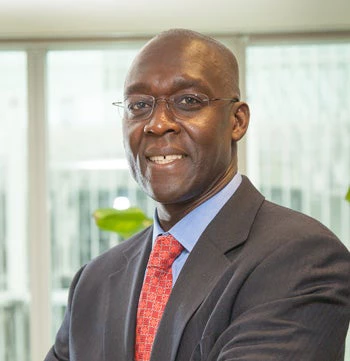In May this year, I joined World Bank Group President Jim Yong Kim and U.N. Secretary General Ban Ki-moon on their historic visit to Africa’s Great Lakes region.
As we travelled this war-weary region, at every stop, whether in towns or the countryside, we saw families involved in an epic effort to keep the peace, find jobs, feed and educate their children, and make their lives more prosperous.
During this historic trip, and on my earlier visits across the continent in the course of the last almost 18 months as World Bank regional Vice President for Africa, I have seen first-hand how Africa is starved of electricity. Africans need more electricity, more jobs, better clinics and schools, and more trading opportunities, to name some of the challenges that continue to hold their countries back. While we were in the Great Lakes, the World Bank Group’s President Jim Kim announced a US$1 billion Great Lakes Regional Initiative designed to bring some of these every day needs within the reach of ordinary people.
Fast forward to August 6. The World Bank’s Board of Executive Directors approved US$340 million in financing from IDA, the Bank Group’s fund for the poorest countries, for the Regional Rusumo Falls hydroelectric project, a new, run-of-the-river project that will contribute 80 megawatts of clean, green, renewable power to the grids of Burundi, Rwanda and Tanzania, lighting people’s homes, powering job-led growth and improving people’s livelihoods.
Why is hydropower important for Africa’s future?
Globally, hydropower provides 20 percent of the all electricity produced and consumed. Hydropower can be huge in Sub-Saharan Africa, but only 10 percent of its potential has been tapped. In industrialized countries, that number tops 80 percent. We can and must do more to increase hydropower’s contribution to Africa’s energy mix.
A run-of-the-river project does not require construction of a dam. The Rusumo Falls project will use the powerful currents and cascades of the Kagera River, on the border of Rwanda and Tanzania, to turn turbines that produce electricity. Second, it will be a source of cheap electricity and won’t pinch pockets, especially those of poor people. Power generated by the project will cost US$0.062 per kilowatt hour, compared to US$ 0.25/kWh that people are currently paying for expensive, polluting thermal generation. Finally, the Rusumo Falls project is a prime example of a project that helps build African capacities and takes a regional approach to developing cost-effective, environmentally sensitive win-win development solutions.
Currently, only 4 percent of Burundi’s population has access to electricity. Comparable figures for Rwanda and Tanzania are 13 and 15 percent respectively. Meeting this energy shortfall is a pressing need.
The Rusumo Falls project is just the kind of smart, green development project that Africa needs. It was certainly satisfying to see that a pledge was made in May. It is more gratifying to see that the pledge is being redeemed. Much more work remains and the World Bank is committed to literally powering Africans to achieve their aspirations with projects and programs that cross borders and achieve regional transformation.


Join the Conversation